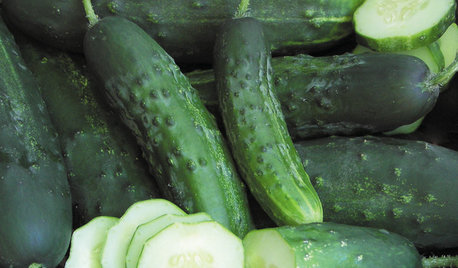Specialty Containers and Crop Rotation?
Bruce (Vancouver Island)
5 years ago
Featured Answer
Sort by:Oldest
Comments (17)
digdirt2
5 years agoJohn D Zn6a PIT Pa
5 years agoJohn D Zn6a PIT Pa
5 years agogardengal48 (PNW Z8/9)
5 years agoBruce (Vancouver Island)
5 years agoJohn D Zn6a PIT Pa
5 years agoJohn D Zn6a PIT Pa
5 years agoBruce (Vancouver Island)
5 years agoJohn D Zn6a PIT Pa
5 years ago- Bruce (Vancouver Island) thanked daninthedirt (USDA 9a, HZ9, CentTX, Sunset z30, Cfa)
Bruce (Vancouver Island)
5 years ago
Related Stories

SUMMER FRUITS AND VEGETABLESSummer Crops: How to Grow Cucumbers
Pick a peck for pickles or opt for fewer and raw — no matter how you slice them, cucumbers are great for summer gardens small to large
Full Story
GARDENING GUIDESSummer Crops: How to Grow Peppers
Some like 'em hot; others like them sweet. With the incredible range of peppers available for home gardens, you can have your pick
Full Story
FARM YOUR YARDHow to Grow Vegetables in Containers
Get glorious vegetables and fruits on your patio with a pro’s guidance — including his personal recipe for potting mix
Full Story
EDIBLE GARDENSSummer Crops: How to Grow Tomatoes
Plant tomato seedlings in spring for one of the best tastes of summer, fresh from your backyard
Full Story
GARDENING AND LANDSCAPINGCream-of-the-Crop Vegetable Gardens
Both trendy and traditional, these inspired potager designs turn the everyday vegetable garden into art for your landscape
Full Story
GARDENING GUIDESSummer Crops: How to Grow Okra
Go for the gumbo with this quick-growing edible that brings colorful pods and delicate flowers to a summer garden
Full Story
FARM YOUR YARD10 Easy Edibles to Grow in Containers
These herbs, vegetables and fruits are just as happy in a pot as they are in the ground
Full Story
GARDENING GUIDESOrganic Matters: Thwart Insect Pests With Trap Crops
Add a few sacrificial plants to your garden to lure insects away from the harvest
Full Story
FALL GARDENING5 Fall Fruits You Can Grow in Containers
Brighten your porch or patio with a potted pomegranate, kumquat, blueberry bush or another great fall fruit
Full Story
ARTSee the Cream of the Crop From Quilt National ’17
The judges of the international art quilt competition reveal their 12 favorites — and why
Full Story







daninthedirt (USDA 9a, HZ9, CentTX, Sunset z30, Cfa)